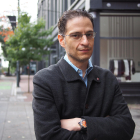In 2006, I had a conversation with a campaign organizer in Washington, DC. He was instrumental in the victory of a Bolivian presidential candidate after an election that did not require a run-off (as is customary in other South American countries).
He kindly showed me his polling and said: “If the campaign had lasted one more day, the opposition candidate would have overtaken us.” Indeed, the red line was creeping dangerously close to the blue line in his graph.
But the last poll was conducted the night before Election Day.
Timing is everything in politics. In the end, it was the length of the campaign that affected the ruling party that implemented the guidelines in the first place. At the start, a victory for the New Democratic Party (NDP) seemed plausible in the Canadian federal election. At the halfway point of this long campaign—the moment when voters would have had their say in any other election—the Conservative Party bounced back with news of a budget surplus.

There was only one problem: the campaign was not going to end the next day.
Tracking the views of voters in British Columbia was particularly interesting this year. The NDP began to lose steam in September, and it was in our final Insights West poll where confirmation of the items that are necessary to signal a seismic shift materialized: Justin Trudeau’s momentum soared to +24 in British Columbia, his approval rating jumped to 64 per cent, and he was leading as the preferred prime minister for the first time (at 30 per cent, four points ahead of incumbent Stephen Harper).
The same proportion of British Columbians as in September—three in four—wanted change. In October, they had found the right vehicle for it.
There has been a lot of ink and airtime devoted to the excruciatingly irresponsible notion that young people never vote. This may have been true in some elections, but not all of them. The blanket statement only helps duplicitous pundits who are better at predicting the past than working in the present.
The answer in 2015 is simple: Trudeau connected with young voters in a way that no other leader could. On the economy and jobs—the top issue for BC residents—he received the endorsement of 44 per cent of those aged 18-to-34 in our last poll.
For the NDP, the days following the election will be filled with “what if” questions.
British Columbians continued to regard Thomas Mulcair as the superior choice to handle child care, surveillance and Canada Post until a few hours before the polling stations opened. Unfortunately for NDP supporters, these never became ballot issues.
The NDP strategy probably alienated soft supporters. They liked what Mulcair was doing in the House of Commons every afternoon, but saw a very different person campaigning on a promise of not running deficits and decriminalizing marijuana possession. These were small “c” conservative issues that had nothing to do with the core themes that turned people closer to the NDP months ago: government accountability and equality.
The NDP is now back at the levels it had after the first election it fought under Jack Layton in British Columbia. In our last poll, three-in-ten of the 2011 Layton “Orange Wave” voters said they were going to support the Liberals. This definitely had an effect on province-wide voting percentages, but not in all ridings.
The NDP managed to win 14 of the 42 seats at stake, surviving tough races in Cowichan—Malahat—Langford, Courtenay—Alberni, Esquimalt—Saanich—Sooke, Nanaimo—Ladysmith and South Okanagan—West Kootenay.
Still, this will feel like a loss. In August, the NDP appeared to be winning the fight for the disenchanted Conservative voter. At the time, 14 per cent of British Columbians who supported the Tories in 2011 were going to vote for the NDP. In our final poll, the number dropped to five per cent. In contrast, the Liberals began with 10 per cent of “former Tories” and finished the campaign with 20 per cent of them. That’s one-in-five people who voted Conservative in 2011 choosing the Trudeau-led Liberals this year.
Just how historic is this night? The three times Jean Chrétien formed majority governments (1993, 1997 and 2000), the Liberals finished in second place to Reform or the Canadian Alliance in British Columbia. Under Trudeau, they are first. Their seat count is impressive (17 seats to 10 for the Conservatives), with support being heavily concentrated in Metro Vancouver.
In a province where federal votes usually go to Conservatives and New Democrats, the third party has leapfrogged to first place. As was the case in Alberta under Rachel Notley, the tone of the campaign mattered immensely. It turned BC’s perennial also-ran into its top vote-getter.
The Conservatives will enter a period of reflection. Aside from the evident problems of leadership change, an aging base and an inability to connect with younger voters, the decision to focus on citizenship and immigration issues with a negative light definitely hurt their chances in seats such as Vancouver South, North Vancouver, West Vancouver—Sunshine Coast—Sea to Sky Country and Steveston—Richmond East.
Our polling showed just how upset Metro Vancouverites of East Asian and South Asian descent were with government policies. They may have become citizens under a Conservative prime minister, but that did not mean they were going to stay there forever.



Comments